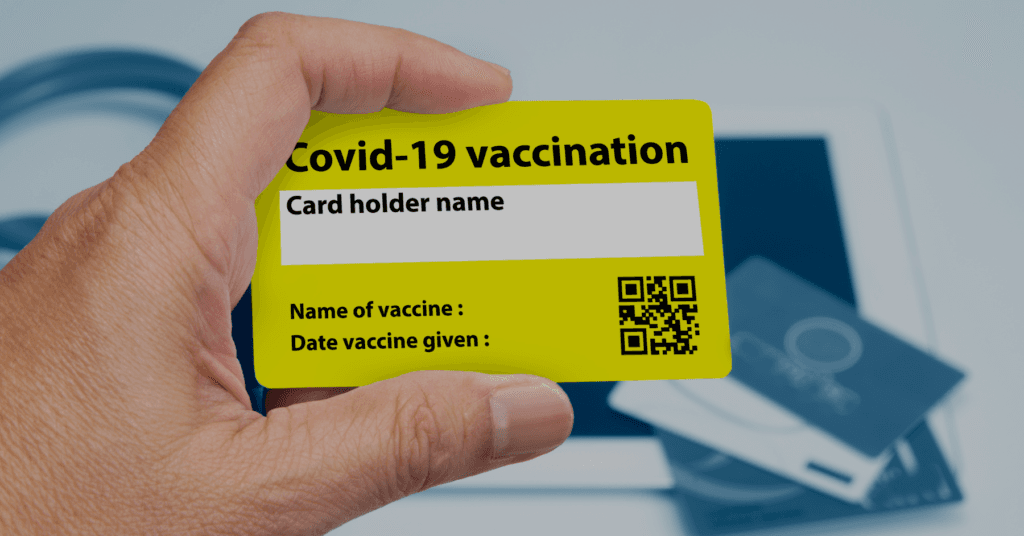President Biden recently announced that federal workplace safety officials will soon issue a rule that will mandate all employers with 100 or more employees to either ensure their workers are vaccinated or require unvaccinated employees to produce a weekly negative test result before coming to work.
“Too many of our frontline healthcare workers continue to be at high risk of contracting the coronavirus,” remarked U.S. Secretary of Labor Marty Walsh. “As I said when I came to the department, we must follow the science. This standard follows the science, and will provide increased protections for those whose health is at heightened risk from coronavirus while they provide us with critical healthcare services. Given the pace of vaccinations, this standard, along with the guidance OSHA, the CDC and other agencies have released, will help us protect frontline healthcare workers and end this pandemic once and for all.”
The New Emergency OSHA Rule
The Occupational Safety and Health Administration (OSHA) will soon promulgate a rule that requires all private employers with more than 100 employees—estimated to impact about two-thirds of the country’s workforce—to be vaccinated or produce a weekly negative test result before coming to work.
The rule will take the form of an Emergency Temporary Standard (ETS), which allows the agency to enact regulations it can enforce immediately if a “grave danger” to worker safety is present. The Occupational Safety and Health Act of 1970 authorizes the Secretary of the U.S. Department of Labor to implement emergency rules—without the formal notice and comment rulemaking process—when “employees are exposed to grave danger from exposure to substances or agents determined to be toxic or physically harmful or from new hazards.”
“This standard is necessary to give our healthcare workers deeply needed protections,” said Acting Assistant Secretary of Labor for Occupational Safety and Health Jim Frederick. “This tailored standard allows OSHA to help the workers most in danger of contracting the virus, while the updated guidance will give other businesses across the country the information they need to help protect unvaccinated workers and continue mitigating spread in the workplace.”
Which Employers are Covered?
Because OSHA will be the agency responsible for issuing and enforcing the ETS, all employers covered by the Occupational Safety and Health Act must comply with the ETS.
However, many office-based employers don’t even realize they fall under this statute and aren’t accustomed to interacting with OSHA. This includes banks and other financial institutions, insurance companies, law firms, and other professional and technical work environments.
Businesses will also be required to give workers paid time off to get vaccinated and to recover from any vaccine side effects as part of the forthcoming ETS. Also, Labor Department officials have stated that while employers must provide paid time off for employees to receive and/or recover from the vaccine, employers could require employees to use their existing paid time off for this purpose.
Employers who fail to comply with the new rule could face OSHA citations and penalties of up to $14,000 per violation. This likely means a fine of up to $14,000 for each facility inspected by OSHA where a covered employer has failed to implement a mandatory vaccine policy or otherwise complied with the ETS.
California Must Adopt ETS or “Just-as-Effective Measures”
Once issued, the ETS will have immediate effect in the 29 states where federal OSHA has jurisdiction. However, in states where the federal government doesn’t have jurisdiction over workplace safety (OSHA-state-plan states such as California, Tennessee, North Carolina, and Kentucky) these agencies will have to adopt the ETS or “just-as-effective measures” within 15 to 30 days.
The Emergency Temporary Standard can stay in place for six months. After that, it must be replaced by a permanent OSHA standard. That rule must go through the formal rulemaking process, including a typical notice-and-comment period.
Unanswered Questions about the Details of the ETS
There remain a number of significant details that are unknown at this point as to the application of the ETS. This includes whether a specific type of testing will be required and who will pay for COVID testing as well as how employers are to count their employees for the 100-employee threshold, and whether there will be employer reimbursement for paid time off. However, on a September 10th webinar, Labor Department officials confirmed that the ETS will contain information about who bears the responsibility for COVID-19 testing costs.
Furthermore, the President’s federal employee and contractor executive orders, provide elements of what may be anticipated in the ETS. For example, on September 24, 2021, the Safer Federal Workforce Task Force issued guidance applying the vaccine mandate and other safety measures to employees of almost all government contractors and subcontractors on construction contracts which includes small business and regardless of employee headcount and requires remote workers to comply with the vaccination requirement even if the employee never works on site.
Takeaway
California businesses should start to prepare for the forthcoming Emergency Temporary Standard by creating company policies for determining employees’ vaccination status and procedures for monitoring weekly test results while also planning to address requests for accommodation based on medical or religious reasons.
We will continue to monitor this swiftly developing issue, and report on key developments.


